Few things betray our inner stress and aging process more visibly than the deep creases that gradually etch themselves between our eyebrows and across our foreheads. Commonly referred to as frown lines, these expressive wrinkles are often a source of frustration for those who want their outward appearance to reflect how youthful, rested, or emotionally balanced they feel inside. Understanding how to get rid of frown lines on your forehead requires more than cosmetic curiosity; it invites a deeper look at the biological, psychological, and lifestyle factors that contribute to their formation—and more importantly, the expert-backed strategies that can smooth them away while supporting overall skin health.
You may also like: How to Choose Skin Care for Fine Lines: Evidence-Based Tips for Healthier, Younger-Looking Skin
In both medical aesthetics and mental wellness, frown lines—or worry lines on the forehead—have become emblematic of emotional wear. They signify more than the passage of time; they symbolize the burdens we carry, the emotions we suppress, and the environments that strain our bodies. As such, the treatment for frown lines is not merely about surface-level correction. It often involves addressing underlying habits, health factors, and even stress management. For those seeking the best treatment for frown lines or hoping to prevent their development altogether, this article offers an integrative, evidence-based approach rooted in science, dermatology, and psychological insight.
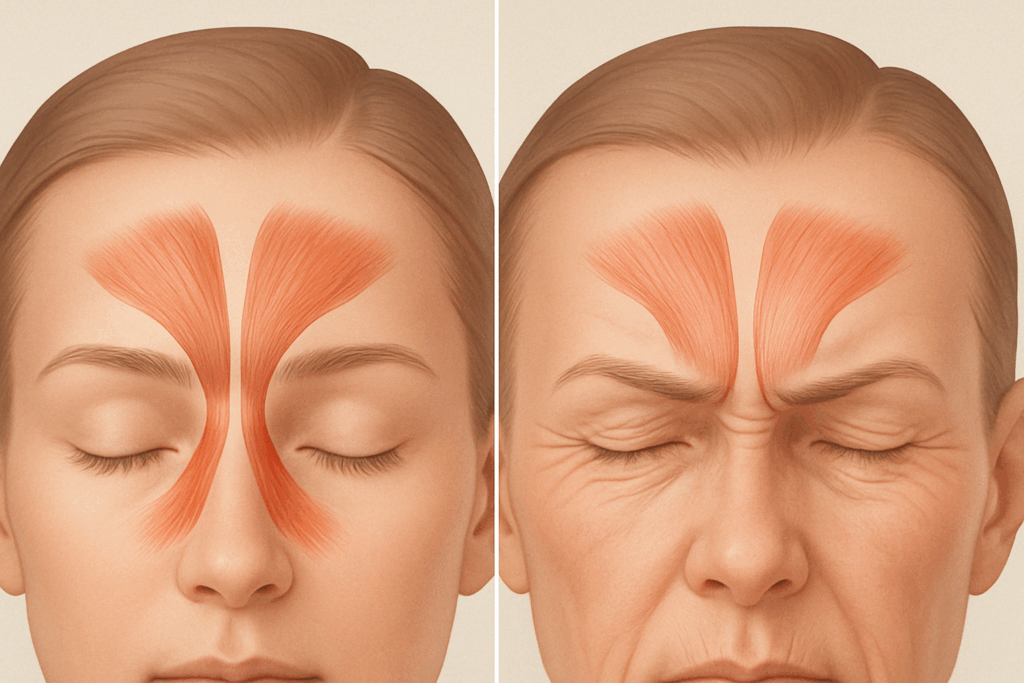
What Causes Frown Wrinkles to Form in the First Place?
To effectively address frown wrinkles, it’s essential to understand why they form. These lines—often called glabellar lines when they appear between the eyebrows—are the result of repetitive muscle contractions, particularly those of the corrugator supercilii and procerus muscles. These muscles activate when we frown, squint, or express concentration or frustration. Over time, repeated use, especially in the absence of counterbalancing muscle activity or care, causes the skin above them to fold and crease permanently.
The loss of collagen and elastin, two vital structural proteins in the skin, further accelerates this process. As we age, our natural production of these proteins declines, making the skin thinner, less elastic, and more prone to wrinkling. Additionally, lifestyle habits such as smoking, sun exposure, poor nutrition, and chronic stress can expedite the breakdown of collagen and elastin, compounding the development of deep frown lines.
Genetics also play a significant role in the formation of worry lines on the forehead. Some individuals may inherit a predisposition to early or more prominent wrinkling, while others may maintain smoother skin longer due to favorable genetic factors. Environmental elements such as pollution and blue light exposure from screens can also contribute subtly but steadily to oxidative stress in skin cells, reducing their ability to repair and renew.

The Emotional Component: Frown Lines and Mental Health
Frown lines are often seen as markers of aging, but they also reveal a great deal about our internal emotional states. Chronic facial expressions, particularly those associated with stress, sadness, or concentration, contribute directly to the deepening of these lines. Over time, these expressions become etched into our features, serving as a visible record of our emotional history.
In this context, the development of frown wrinkles can reflect not just the passage of time but the weight of chronic emotional strain. Individuals who experience persistent anxiety, burnout, or emotional suppression may inadvertently overuse facial muscles associated with frowning, thereby reinforcing these lines. This connection highlights the relationship between psychological well-being and facial aging—a connection that supports a holistic approach to skin health.
Moreover, frown lines can perpetuate a cycle of self-consciousness. As these lines become more prominent, individuals may feel they look angry, tired, or unapproachable, which can affect interpersonal interactions and self-esteem. In this way, the treatment for frown lines may also be a pathway to improving psychological well-being by restoring a more relaxed and open facial appearance that aligns better with one’s internal state.
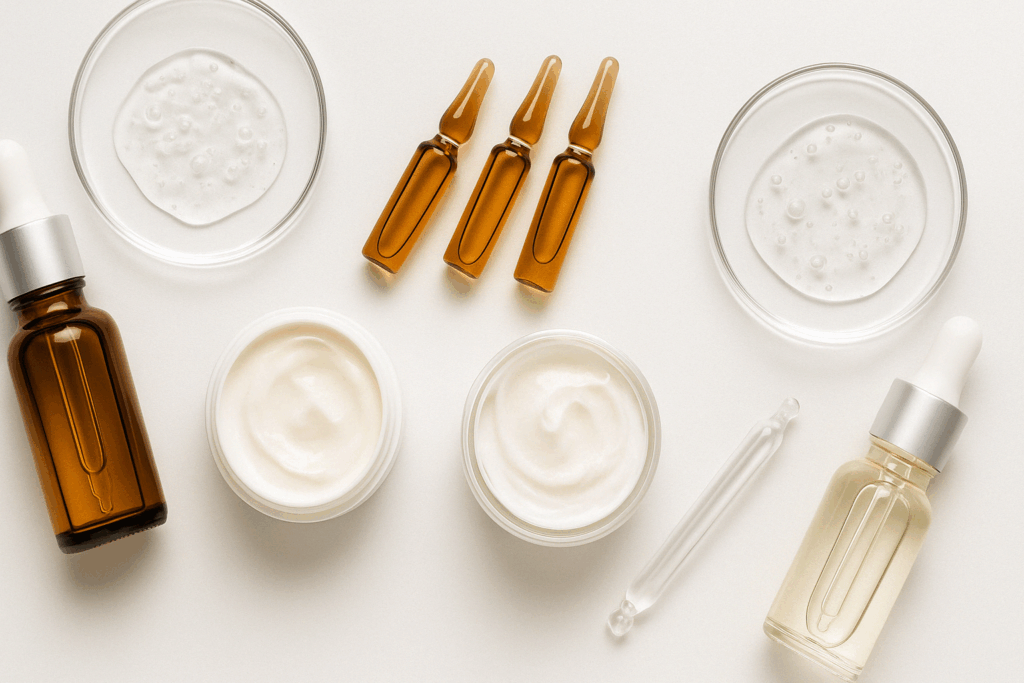
Topical Skincare Ingredients Backed by Science
One of the first lines of defense—and sometimes offense—against frown wrinkles involves using clinically validated topical skincare products. Retinoids, particularly tretinoin and retinol, have long been considered the gold standard in dermatology for reducing the appearance of fine lines and stimulating collagen production. These vitamin A derivatives work by accelerating cell turnover and encouraging the synthesis of new collagen fibers, which can gradually improve skin texture and depth of wrinkles.
Peptides, small chains of amino acids, are another effective ingredient. Certain peptides signal the skin to produce more collagen or reduce muscle contraction, mimicking the effect of neuromodulators in a gentler, topical form. Matrixyl and Argireline are two examples of peptides that have shown promise in reducing the visibility of deep frown lines and improving skin elasticity.
Antioxidants such as vitamin C, ferulic acid, and niacinamide also play a crucial role. By neutralizing free radicals that accelerate collagen breakdown, these compounds protect the skin’s structural integrity and prevent further wrinkle formation. When combined with moisturizers that contain hyaluronic acid—a molecule that draws water into the skin—these ingredients can visibly plump and smooth the forehead, softening the appearance of worry lines and promoting a healthier skin barrier.
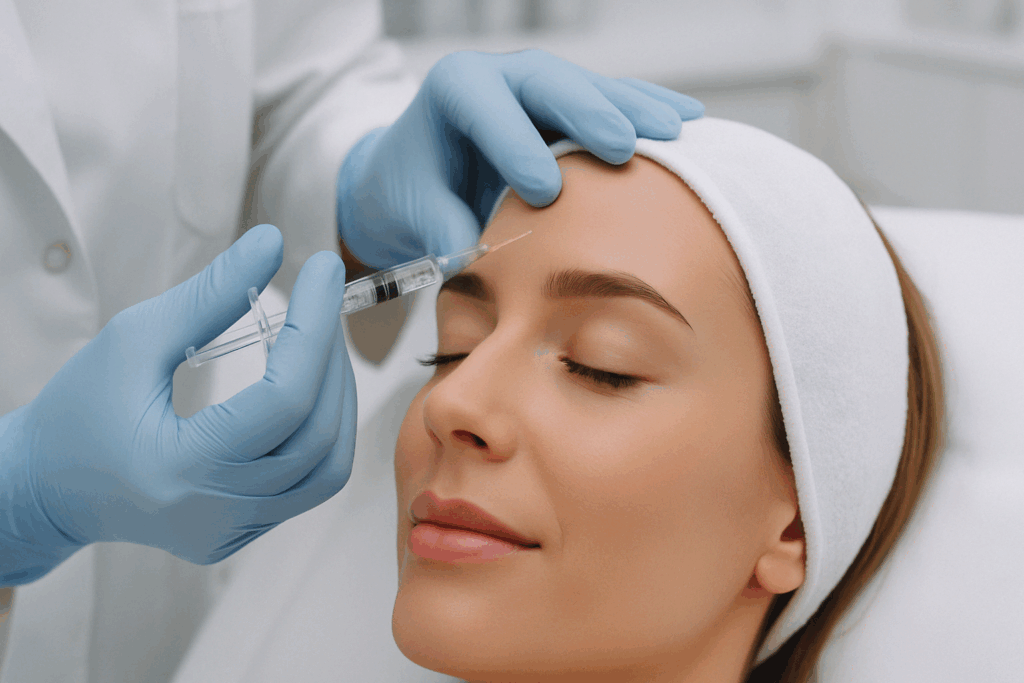
Professional Dermatologic Procedures for Lasting Results
For individuals seeking the best treatment for deep frown lines, professional dermatologic interventions often provide faster and more noticeable results than topical products alone. Among the most popular and effective treatments is botulinum toxin type A, commonly known as Botox. This injectable neuromodulator temporarily paralyzes the muscles responsible for frowning, effectively preventing them from contracting and thus reducing the formation and deepening of wrinkles.
When administered by a skilled provider, Botox not only diminishes existing lines but also serves as a preventive measure, especially for younger individuals beginning to show early signs of glabellar wrinkling. The results typically last three to four months, and with consistent use, patients often notice a long-term softening of deep frown lines even when the product has worn off.
Another option for treating entrenched frown wrinkles includes dermal fillers, particularly those containing hyaluronic acid. These fillers can be strategically injected into the forehead and between the eyebrows to add volume beneath the skin, smoothing out deep creases and creating a more youthful contour. When used in conjunction with Botox, the combination offers a synergistic effect: the filler restores lost volume while the neuromodulator halts further muscle-induced wrinkling.
Emerging technologies such as microneedling with radiofrequency, fractional laser resurfacing, and ultrasound-based skin tightening can also help diminish worry lines on the forehead by stimulating the skin’s natural healing and collagen production mechanisms. These treatments are particularly valuable for those who prefer non-injectable options or want to enhance their results with minimal downtime.
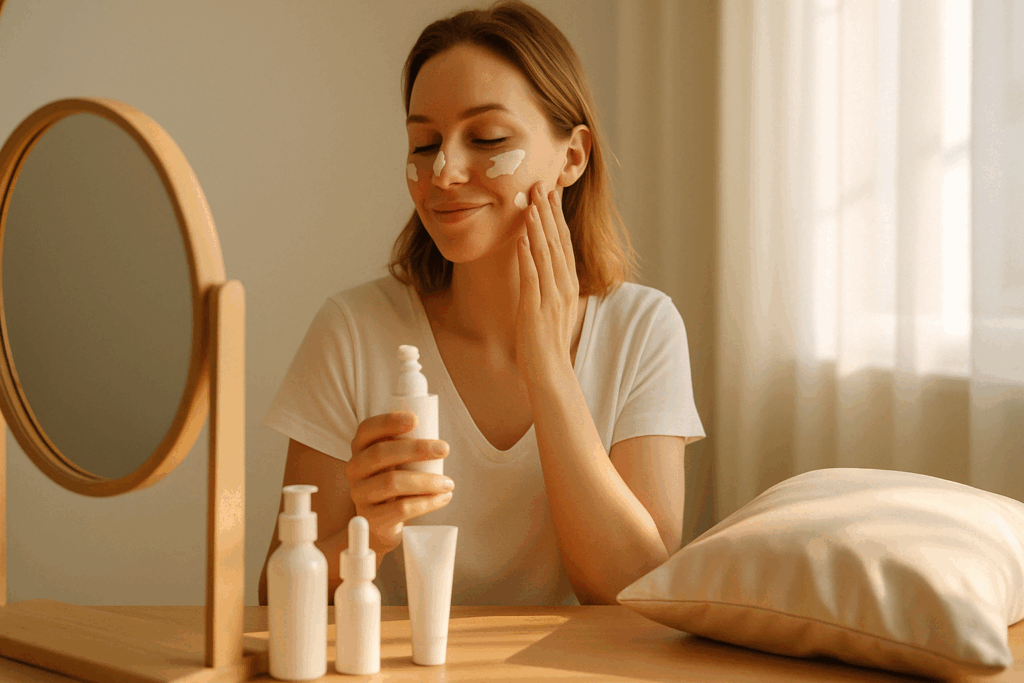
The Role of Daily Habits in Prevention and Maintenance
Even the best treatment for frown lines can be undermined by lifestyle choices that accelerate aging. Preventing deep frown lines requires an ongoing commitment to skin health, and that starts with sun protection. Daily application of a broad-spectrum sunscreen with SPF 30 or higher is essential to prevent ultraviolet damage, which is a primary contributor to collagen breakdown and the worsening of existing wrinkles.
Equally important is maintaining adequate hydration, both internally through fluid intake and externally via moisturizing skincare. Dehydrated skin is more prone to creasing and flaking, which can exaggerate the appearance of frown lines. A diet rich in antioxidants, healthy fats, and collagen-boosting nutrients like vitamin C and zinc supports skin repair and resilience from within.
Sleep quality and posture also play a surprising role. Chronic sleep deprivation increases cortisol levels, which can break down collagen and lead to sagging skin. Moreover, sleeping face-down or with the forehead compressed against a pillow may reinforce frown wrinkles over time. Opting for a silk pillowcase and training oneself to sleep on the back can help reduce mechanical wrinkling.
Stress reduction is another powerful form of wrinkle prevention. Techniques such as mindfulness meditation, yoga, or even cognitive behavioral therapy can reduce the unconscious tendency to furrow the brow, especially in response to emotional triggers. In this way, managing psychological stress becomes a key strategy for those learning how to prevent frown lines while improving mental and emotional well-being.

Psychodermatology: Where Skin Health Meets Mental Health
Psychodermatology is an emerging field that explores the interaction between the mind and the skin, offering compelling insights into the prevention and treatment of frown wrinkles. According to research, stress can directly impair skin barrier function, reduce healing capacity, and increase inflammation—all of which exacerbate the formation of lines and other signs of aging.
Therapeutic interventions that target both the psychological and dermatological aspects of wrinkle formation are gaining attention. For instance, integrating talk therapy with dermatologic care has helped some patients not only improve their skin but also resolve the underlying emotional habits—like chronic frowning—that contribute to premature aging. This approach can be particularly valuable when addressing deep frown lines that are deeply etched into the skin and into patterns of behavior.
In some cases, patients may benefit from biofeedback training to become more aware of their facial muscle tension. These sessions teach individuals how to consciously relax specific muscle groups, including those involved in frowning, reducing the intensity and frequency of contractions that lead to wrinkle formation. Combining such therapies with standard dermatologic care provides a more comprehensive, long-lasting solution for worry lines on the forehead.
Timing Matters: When to Start Treatment for Optimal Results
One of the most common misconceptions about wrinkle treatment is that it’s only necessary once lines have become deep and prominent. However, starting treatment earlier—often in one’s late twenties or early thirties—can offer preventive benefits that preserve skin smoothness well into later decades. Early intervention, especially with neuromodulators or peptide-based skincare, can prevent habitual facial expressions from etching themselves permanently into the skin.
This doesn’t mean that those with already established deep frown lines cannot benefit from treatment. On the contrary, combining multiple modalities—such as Botox with laser resurfacing or fillers—can produce dramatic improvements. What matters most is selecting the best treatment for lines between eyebrows or across the forehead based on the individual’s age, skin condition, lifestyle, and emotional patterns.
Consulting with a board-certified dermatologist or cosmetic physician ensures that the chosen approach is safe, effective, and tailored to your unique skin. A personalized treatment plan can address not just how to get rid of frown lines on the forehead, but how to sustain smoother, healthier skin over the long term.
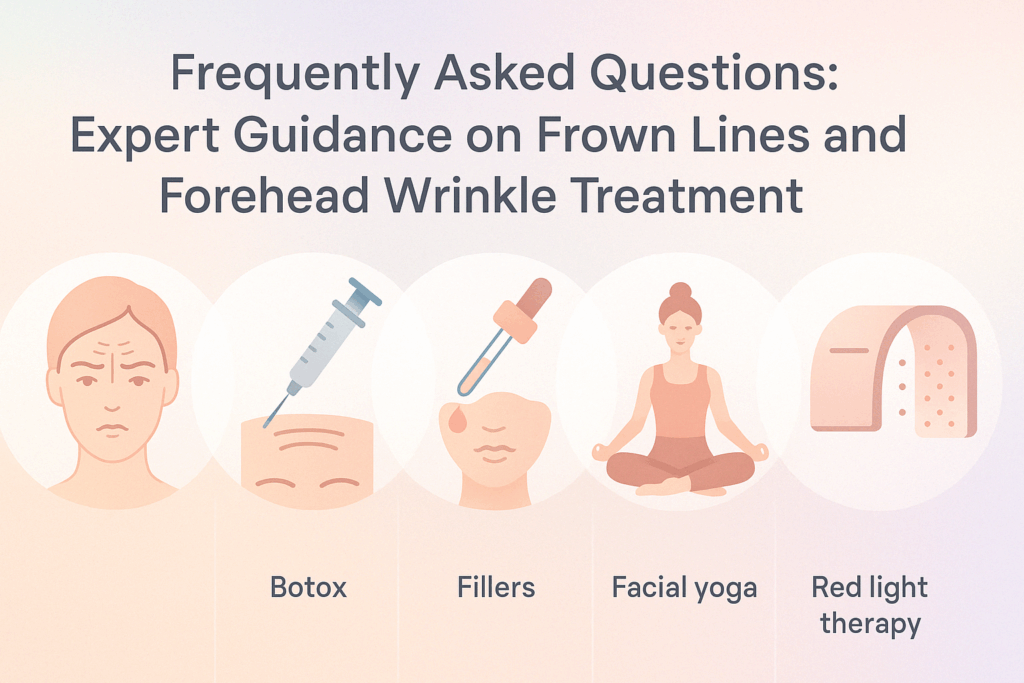
Frequently Asked Questions: Expert Guidance on Frown Lines and Forehead Wrinkle Treatment
1. Can facial yoga or muscle retraining really help reduce deep frown lines?
Facial yoga and muscle retraining can offer modest but meaningful benefits when used consistently over time. These techniques focus on consciously activating and relaxing specific facial muscles, which can counteract the repetitive stress that causes frown wrinkles. While not a replacement for clinical treatments, such exercises may be particularly useful for those looking to complement the best treatment for frown lines or maintain results after Botox or fillers. Muscle retraining may also help reduce tension in the forehead, thus slowing the progression of worry lines on the forehead. Though more research is needed, emerging data suggest that non-invasive neuromuscular conditioning can serve as a preventative tool, especially for individuals averse to injectable procedures.
2. What role does screen time play in the development of frown wrinkles?
Prolonged screen use contributes to the formation of frown lines by encouraging squinting, eye strain, and unconscious brow furrowing—behaviors that activate the very muscles responsible for glabellar wrinkles. In today’s digital era, this form of repetitive strain can begin earlier than expected, especially in individuals with uncorrected vision or poor posture. Over time, this constant contraction may accelerate the appearance of deep frown lines. Adjusting lighting, enlarging text, and practicing the 20-20-20 rule can help mitigate digital fatigue and serve as a subtle but effective approach for those wondering how to prevent frown lines. Investing in blue-light filtering lenses and maintaining awareness of your facial expressions during screen use are also key components in a preventative strategy.
3. Is there a genetic link to developing worry lines on the forehead?
Yes, genetics can influence how early and how prominently frown wrinkles appear. Individuals may inherit thinner skin, decreased collagen production, or heightened facial expressiveness—all of which can affect wrinkle formation. While genetics set the stage, environmental exposures and lifestyle choices often determine the final outcome. For this reason, even those with a genetic predisposition can benefit from early interventions, including sunscreen use, stress reduction, and the best treatment for deep frown lines tailored to their skin profile. Recognizing familial trends in wrinkle development can also guide proactive care, helping individuals better understand when and how to get rid of frown lines on the forehead before they become deeply entrenched.
4. How do hormonal changes influence frown line severity?
Hormonal fluctuations, particularly those related to estrogen and cortisol, can significantly impact skin integrity and the appearance of deep frown lines. Estrogen helps maintain collagen and skin hydration, so its decline during menopause may lead to accelerated skin thinning and wrinkling. Elevated cortisol from chronic stress exacerbates this process by breaking down existing collagen and impairing skin regeneration. This hormonal interplay explains why many women notice a rapid deepening of frown wrinkles in midlife. In such cases, hormone-aware skin care and lifestyle strategies—alongside targeted dermatological treatments—can optimize the best treatment for frown lines by addressing the root cause of skin deterioration.
5. Can nutrition really impact how to prevent frown lines?
Absolutely. Skin is a reflection of internal health, and nutrient deficiencies can hasten the development of frown lines. Antioxidants like vitamin C, E, and selenium protect skin from oxidative damage, while zinc and amino acids support collagen synthesis. Omega-3 fatty acids, found in fatty fish and flaxseed, help reduce inflammation that can degrade skin structure. Individuals seeking practical ways to prevent frown lines or enhance the best treatment for lines between eyebrows should view nutrition as a foundational element. Incorporating whole foods, staying hydrated, and limiting sugar and alcohol are powerful yet often overlooked strategies for long-term skin resilience.
6. Are there any psychological techniques to help minimize facial tension that causes frown wrinkles?
Yes, psychological tools like mindfulness-based stress reduction (MBSR), progressive muscle relaxation (PMR), and somatic awareness training can all help reduce unconscious facial tension. These approaches enhance bodily awareness, making it easier to identify and release muscle contractions before they become habitual. Over time, this increased awareness may help decrease the intensity and frequency of brow furrowing, particularly in response to emotional triggers. For those exploring how to prevent frown lines without relying solely on external treatments, these techniques offer an internal form of intervention. When paired with the best treatment for frown lines, mind-body practices may even prolong the effects of dermatological procedures.
7. What’s the most promising new treatment for frown lines currently in clinical development?
Recent advances in peptide technology, biostimulatory fillers, and next-generation neuromodulators are reshaping the landscape of wrinkle care. One particularly exciting development is the introduction of botulinum toxin variants that offer longer-lasting effects with more targeted action. These innovations could redefine the best treatment for deep frown lines by minimizing the frequency of injections while enhancing precision. Additionally, research into topical botulinum-mimicking peptides is gaining traction, potentially offering a non-invasive option for managing worry lines on the forehead. As these technologies move through clinical trials, they promise a future in which wrinkle reduction becomes even more customizable, efficient, and patient-friendly.
8. How does sleep posture affect the appearance of lines between eyebrows?
Sleep posture is a lesser-known but impactful factor in the development of glabellar lines. When individuals sleep face down or on their side, mechanical pressure on the forehead and between the eyebrows can exacerbate existing wrinkles or create new ones. Over time, repeated compression contributes to the deepening of these lines, making sleep-related habits an important consideration in wrinkle prevention. Switching to a back-sleeping position and using a silk pillowcase can help reduce this friction and tension. For individuals committed to the best treatment for lines between eyebrows, optimizing sleep posture is a simple yet effective adjunctive strategy.
9. What are some advanced at-home devices that target frown wrinkles?
High-frequency facial tools, LED light therapy masks, and microcurrent devices have grown in popularity as accessible alternatives to in-office treatments. While results may be subtler, consistent use of these devices can support collagen stimulation and muscle toning. Red light therapy, in particular, has shown promise in reducing inflammation and promoting dermal repair, making it a useful companion for those undergoing treatment for frown lines. Microcurrent tools simulate facial exercise by delivering low-level electrical impulses that improve muscle tone and circulation. When incorporated into a comprehensive skincare routine, these devices can complement the best treatment for frown lines by extending and enhancing professional results.
10. Are there any long-term psychological effects of having untreated deep frown lines?
The visibility of deep frown lines can sometimes contribute to self-esteem issues, social anxiety, or even distorted self-perception, especially in professions or cultures where appearance is closely tied to confidence. Over time, untreated frown wrinkles may reinforce a perception of perpetual anger or fatigue, potentially affecting personal relationships and professional dynamics. This psychological impact underscores the importance of addressing these lines not just for aesthetic reasons but also for emotional well-being. While not everyone is affected in the same way, individuals who feel their facial expressions misrepresent their emotions may find relief and empowerment through the best treatment for deep frown lines. In such cases, cosmetic intervention becomes more than superficial—it becomes an avenue for emotional congruence and psychological health.
Bringing It All Together: Sustainable Strategies for Smoother Skin
Ultimately, learning how to get rid of frown lines on your forehead involves a combination of science, strategy, and self-awareness. No single product or procedure can reverse years of habitual expression, sun exposure, or cellular decline. However, by approaching the issue from multiple angles—medical, psychological, and lifestyle-based—you empower yourself to achieve results that are not only visible but meaningful.
Whether you’re looking for the best treatment for deep frown lines or searching for daily habits that support youthful skin, consistency is key. From high-quality skincare formulations and professional procedures to stress management and sleep hygiene, each element plays a role in supporting your skin’s resilience and radiance. When used together, these approaches can dramatically reduce the appearance of frown wrinkles and restore a smoother, more relaxed expression that truly reflects your inner vitality.
By integrating the insights of dermatology with the wisdom of mental well-being, we move beyond cosmetic fixes toward a more holistic understanding of facial aging. And in doing so, we reaffirm that beauty is not only skin-deep—it is also a reflection of how well we care for ourselves, both inside and out.
Was this article helpful? Don’t let it stop with you. Share it right now with someone who needs to see it—whether it’s a friend, a colleague, or your whole network. And if staying ahead on this topic matters to you, subscribe to this publication for the most up-to-date information. You’ll get the latest insights delivered straight to you—no searching, no missing out
Further Reading:
Wrinkles – Diagnosis and treatment
How to Get Rid of Frown Lines: Natural and Home Remedies
How to Get Rid of Forehead Wrinkles, According to Derms
Disclaimer
The information contained in this article is provided for general informational purposes only and is not intended to serve as medical, legal, or professional advice. While Health11News strives to present accurate, up-to-date, and reliable content, no warranty or guarantee, expressed or implied, is made regarding the completeness, accuracy, or adequacy of the information provided. Readers are strongly advised to seek the guidance of a qualified healthcare provider or other relevant professionals before acting on any information contained in this article. Health11News, its authors, editors, and contributors expressly disclaim any liability for any damages, losses, or consequences arising directly or indirectly from the use, interpretation, or reliance on any information presented herein. The views and opinions expressed in this article are those of the author(s) and do not necessarily reflect the official policies or positions of Health11News.